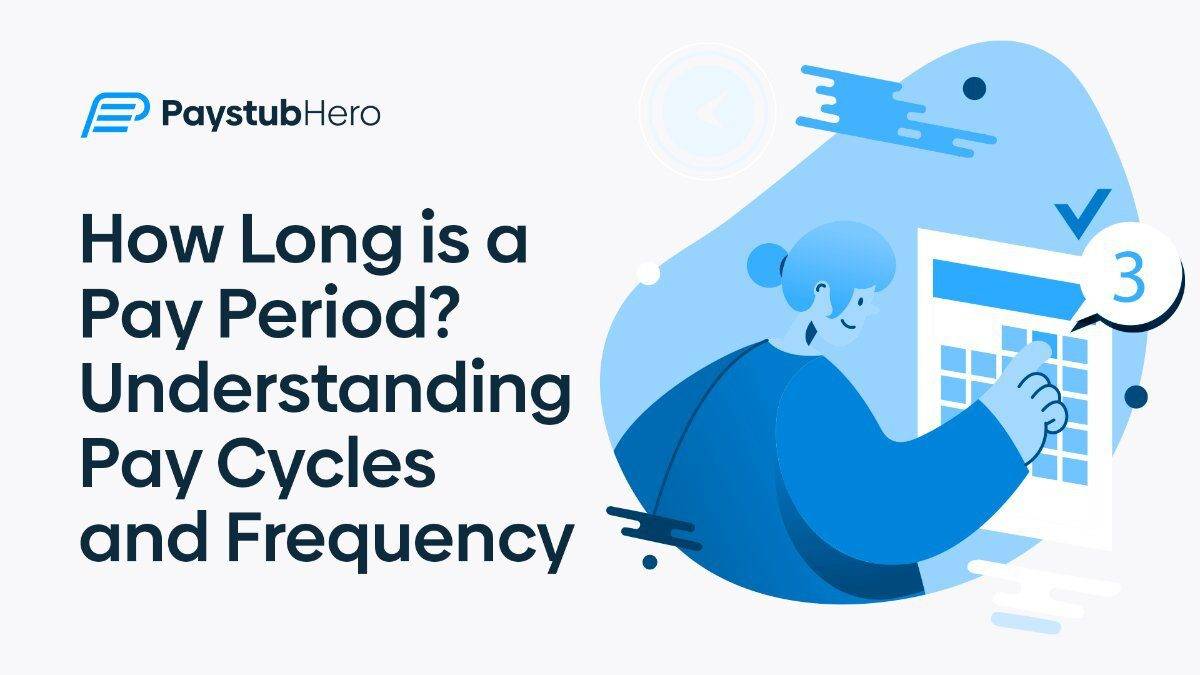The length of a pay period depends on your employer’s chosen pay schedule. It can be weekly, bi-weekly, monthly, or even less common schedules. However, bi-weekly is the most popular option in the US, so the pay period would be two weeks long.
This article will provide more details on different pay period types and what to consider when choosing one.
What Is a Pay Period?
A pay period is how often you get paid at work. In simpler terms, it’s a time window that your company uses to track the hours you worked and then issue your paycheck.
Here’s an example to illustrate:
Let’s say you work in a restaurant with a weekly pay period, meaning you get paid every week. So, this week (from Monday to Sunday) is your current pay period.
During this time, your boss keeps track of all the hours you work. Once Sunday rolls around (the end of the pay period), your boss calculates your total hours and pay for that week.
Then, on a specific day (usually a few days after the pay period ends), you’ll receive your paycheck for all the hours you worked that week.
So, the pay period is that weekly timeframe where your hours are tracked, and your pay is calculated, leading to your paycheck. This brings us to an important distinction: the difference between a pay period and a pay date.
Difference Between a Pay Period and a Pay Date
Now, the pay date is the specific calendar date when the payment is actually made. For instance, if the pay day falls on the 15th of each month, then the pay date for this month would be May 15th.
However, it’s important to note that the pay date doesn’t always fall on the last day of your pay period.
A few days of processing are usually involved before you receive your earnings. An example is with a weekly pay period ending on Sunday. Your company might issue your paycheck on the following Tuesday.
Here’s the Key Difference:
• The pay period is the company’s timeframe for tracking your hours and calculating your pay.
• The pay date is the day you receive your paycheck for the completed pay period.
Common Types of Pay Cycles

To explain how long a pay period lasts, here are some common types of pay cycles and their durations.
1. Weekly Pay Period
A weekly pay period is the most frequent pay schedule, meaning you receive a paycheck every week. This schedule lets you receive your earnings quickly, may allowing for easy budgeting and better cash flow management.
Here’s how it works:
Let’s use the restaurant example from earlier; your pay period typically runs from Monday to Sunday, and your employer tracks all your hours worked during that week. Once Sunday arrives, your total hours are calculated. Your pay is determined based on your hourly wage or salary.
A few days after the pay period ends (usually on a particular day chosen by your company), you’ll receive your paycheck reflecting your earnings for that week.
Pros
• Frequent access to your earnings
• Easier budgeting
• Suitable for those who prefer smaller and more regular paychecks
Cons
• It may require more discipline to manage smaller paychecks
• Less time for payroll processing for employers
2. Bi-Weekly Pay Period
The bi-weekly pay period falls between the weekly and monthly schedules. You’ll receive a paycheck every other week, typically on a designated day (like every other Friday).
This balances frequent access to your earnings and larger paychecks compared to a weekly schedule.
Below is the breakdown:
Similar to a weekly schedule, your employer tracks your hours worked over two weeks. Once the second week ends, your total hours are calculated for the entire bi-weekly pay period, and your paycheck is determined.
There’s then a short processing window before you receive your earnings on the designated pay date.
Pros
• More substantial paychecks than weekly
• Still offer relatively frequent access to earnings.
Cons
• Not quite as frequent as weekly paychecks,
• It requires adjusting budgeting habits for a slightly longer pay period.
3. Semi-Monthly Pay Period
A semi-monthly pay period means you get paid twice a month, usually on specific dates. These dates are often the 1st and 15th or the 15th and last day of the month.
This schedule offers a good balance between receiving regular paychecks and larger paycheck amounts compared to a weekly schedule.
So, how does semi-monthly pay work?
Unlike weekly or bi-weekly schedules that follow a set number of days, a semi-monthly schedule is based on specific calendar dates. Your employer tracks your hours worked from the 1st to the 15th for the first paycheck. Then, they track your hours for the second paycheck from the 16th to the end of the month.
Now, depending on your company’s processing procedures, the pay date might fall on the designated date or a few days later.
Pros:
• Offers larger paychecks than weekly schedules
• Provides some consistency with twice-monthly payments
Cons:
• Payday might not always fall on the same day of the week
• Requires adjusting budgeting for slightly irregular pay periods compared to weekly or bi-weekly
Also Read: Semi Monthly vs Bi Weekly – Understanding Your Paystub
4. Monthly Pay Period
A monthly pay period is the least frequent pay schedule. Under this schedule, you receive a single paycheck for all the hours worked in a month. This results in the largest paychecks of all the options mentioned.
Here’s the breakdown:
Your employer tracks all your hours worked throughout the entire calendar month. Once the month ends, your total hours are calculated. Your paycheck, which reflects your monthly earnings, is then determined.
There’s then a processing window before you receive your paycheck on a designated day chosen by your company.
Pros:
• Largest paychecks of all the schedules
• Allows for potentially simpler budgeting with one large payment
Cons:
• Longest wait time between paychecks
• Requires strong budgeting skills and financial planning to manage a larger sum less frequently.
Choosing the Right Pay Period for Your Business
We’ve covered pay periods and their importance, so how do you choose the right one for your business?
Deciding on a pay period involves considering several factors:
• Business Needs: How often do you need to calculate payroll? More frequent pay periods mean more frequent payroll processing.
• Employee Preferences: How often do your employees want to get paid? Consider your workforce’s needs and budget accordingly.
• Industry Standards: What is the common pay period in your industry? Matching industry standards can help in hiring and meeting employee expectations.
• Federal and State Regulations: Are there any legal requirements for how often you must pay your employees? While the federal government doesn’t tell you exactly when to pay your employees, some states do have rules about it.
For instance, federal employees are typically paid bi-weekly, while many private sector businesses pay their employees semi-monthly (twice a month).
Here’s a quick comparison of bi-weekly and semi-monthly pay periods:
| Factor | Bi-weekly | Semi-monthly |
| Frequency | Every two weeks | Twice a month |
| Number of Paychecks per Year | 26 | 24 |
| Cash Flow Consistency | More consistent for employees | Can vary depending on month length |
In the end, the best pay schedule for your business depends on your situation. Weigh the factors mentioned above to find the balance that works best for you and your employees.
Take Control of Your Pay Cycles Today with Paystub Hero!
Understanding your pay cycle is important, but what if you could maximize your financial clarity regardless of how often you get paid?
Paystub Hero empowers you to:
• Generate accurate and compliant paystubs anytime you need them.
• Gain peace of mind knowing your earnings are documented professionally.
• Take control of your finances with better budgeting and record-keeping.
Don’t wait until payday to feel secure. Get started with Paystub Hero today!
FAQs
Here are some common questions about how often people get paid.
What is the length of the pay period?
The length of a pay period depends on the company’s policy, but it typically ranges from weekly to monthly.
What is the pay cycle time?
“Pay period” and “pay cycle time” refer to the same concept: the amount of time covered by a paycheck.
How do you know how many pay periods are there in a year?
You can calculate the number of pay periods in a year by dividing the number of days in a year by the length of the pay period (in days). For example, if the pay period is bi-weekly (every two weeks), then there are 52 weeks / 2 weeks/pay period = 26 pay periods in a year.








